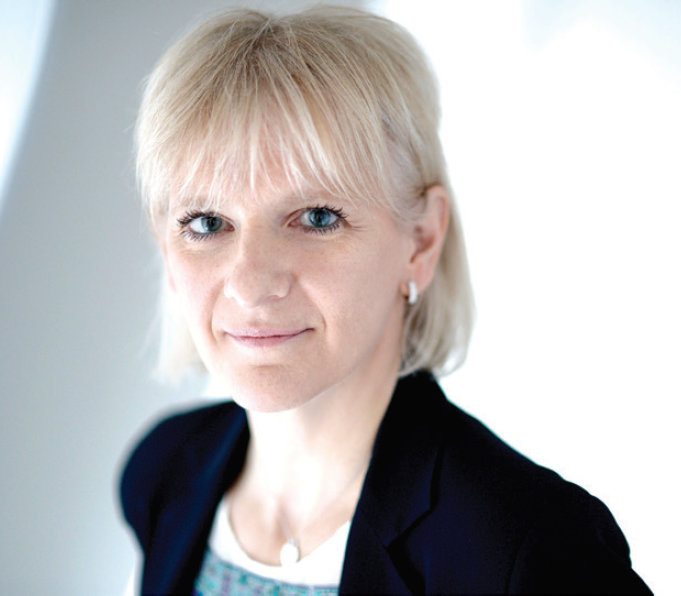Expanding the liquidity pool through partnership creates a wider net of counterparties to benefit buy and sell-side.
Euronext has launched its Liquidity Distributor Initiative, with UBS Bond Port as the pilot partner. This programme is already allowing the exchange’s members to access liquidity channelled via the bank’s platform, creating new avenues of trade execution. Nathalie Masset, Head of Fixed Income at Euronext, and Simon Linwood, Executive Director EMEA at UBS Bond Port explain how their collaboration can benefit buy-side investors.
How does this initiative improve market structure?

Nathalie Masset (NM): We are in the post-MiFID II environment. There were initially expectations regarding MiFID II improving market structure. We can say today that it brought very limited transparency to the market. It was already very fragmented, and MiFID II didn’t reduce the fragmentation of the market.
A positive outcome has been that the market complexity, with the continual reviewing of liquid assets, has led to increased appetite for electronic trading. However, overall, the lack of improvement in transparency and the ongoing fragmentation mean that the challenges that existed before MiFID II are still here. This initiative aims at increasing visibility of our fragmented pool of liquidity.

Simon Linwood (SL): For institutional money managers to find liquidity in normal circumstances is hard enough, but it became extraordinarily hard when the pandemic hit. Private banks, hedge funds and real money clients were using us to work orders that they could not execute in the market.
We saw a huge spike in client liquidity that resulted in traded volume. Our H1 numbers year-on-year are absolutely huge, we’ve had a 153% increase in traded volume plus 94% growth in number of trades; those are important because it tells you that the average trade size is growing as volume growth is outstripping the growth in number of trades.
NM: I expect electronic trading to bring increased cost efficiency into the market and more immediate access to liquidity. If you look at figures in the fixed income world there is liquidity – the amounts being traded on a daily basis are huge, the question is where is this liquidity hidden? We know there are different pools of liquidity but there have been for years and there will not be a one-size-fits-all, so electronification can give market participants easy access to multiple pools which are complimentary and supporting interconnection between several pools is key.
How does the Liquidity Distributor Initiative work?
NM: We decided to review the strategy for our fixed income regulated market in the post-MiFID environment. Our market is a lit and cleared order book and was really a retail market. We decided to reposition our model, based on feedback from market participants to target larger sizes. As it is a lit market we won’t see trade sizes of Ä10 million, we are targeting odd lots. We are also targeting Tier One banks. Today the majority are Tier Two and Three banks. We want Tier One banks in our market providing additional flows and leveraging the development of electronic trading (e-trading) and algos.
The first development is the Liquidity Distributor Initiative (LDI). It proposes to new or inactive members to commit constantly displayed prices derived or aggregated from the prices of our lit order book on at least 4 trading platforms or distribution networks. In exchange, they benefit from incentivised trading and market data fee schemes. This allows us to widen our distribution network to clients who it would be difficult or impossible to reach otherwise and it increases the visibility of our lit and cleared order book.
This is new and we will implement it in pilot mode for one year. After that we will decide on permanent features and perhaps adjust some features. UBS is our pilot liquidity distributor; this is a brand new partnership.
SL: UBS Bond Port wants to partner with its clients and with external venues like Euronext. Having a fully firm central limit order book lends itself to UBS Bond Port; we operate a firm pricing model.
Euronext provides depth of liquidity on the Dutch and French markets, liquidity we haven’t seen elsewhere. Euronext is very strong in hybrid and CoCo bonds but we have also traded French and Dutch government and corporate bonds. If we can help to distribute that liquidity, we then become the hub, not only an extension of liquidity but also technology for the buy-side.
What do heads of trading need to do to benefit from this?
NM: A buy-side firm should understand that this partnership with UBS represents an additional pool of liquidity, in a transparent market with additional partners to trade with and supporting best execution.
SL: This helps to put all of the liquidity that our clients can trade against in one place, making it easier for buy-side firms to trade against. To give you a working example for one Dutch AT1 we had many private banking orders, and Euronext provided very deep liquidity allowing the client to trading through our stack in clips of €1.5 to €2 million, trading a total of €10 million in a 45-minute window. This was a tier one asset manager trading against resting private bank orders and Euronext liquidity.
NM: UBS was previously low in our rankings before it became a liquidity distributor. In the first two months they reached our top ten and by July were in our top five. So, the increase in their activity has been very quick and we are sure it will continue in the coming months.
We have other initiatives in play now, the first should be live in H1 2021 and that is the Dublin Listed Bonds Initiative. Euronext acquired the Irish Stock Exchange two years ago. It is a major fixed income listing hub, but there was no secondary trading venue for bonds in Dublin. We worked with all the key market participants and we identified amongst the 35,000 bonds that are listed there about 1,200 that are of interest for market participants and these bonds are going to become tradeable on our market. So, there will be a Euronext Dublin for fixed income just as with other Euronext markets.
©Best Execution & The DESK 2020
